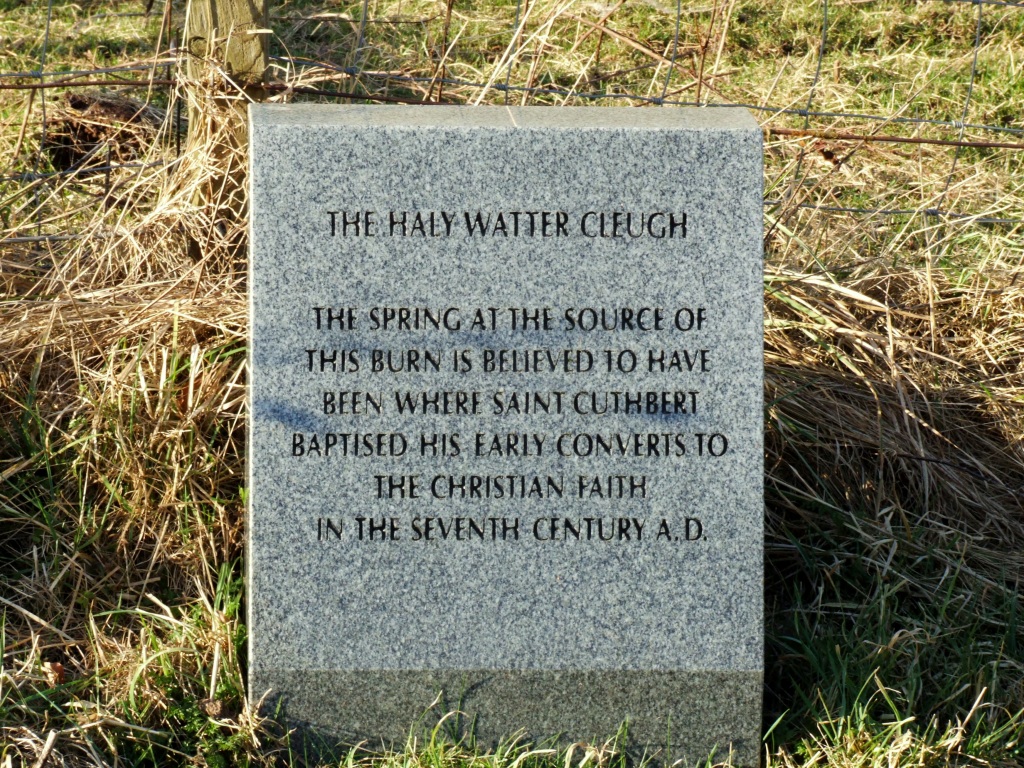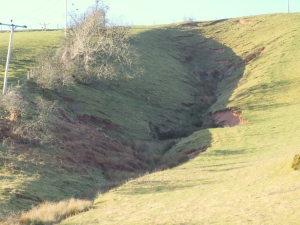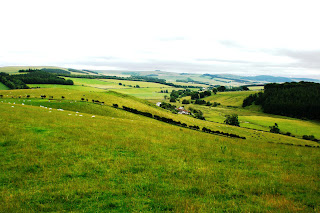Church history
Lauderdale's oldest church
The church at Channel kirk,
the oldest one in Lauderdale, was founded between the 7th and 9th Centuries.
It
has connections with the monks of Dryburgh. At Jedburgh in 1230, King Alexander
II granted a general confirmation to Dryburgh Abbey of all her churches and other
possessions among which is the church of Childinchurch.
Through
the ages the church has been referred to as Childenchurch, Childeschirche, Childer-
Kirk, Gingle-Kirk, Chingelkirk, Channonkirk and from 1716 Channelkirk. The name
perhaps means "Church of the Child" after St Cuthbert.
On
the church bell, which was taken down for repairs in 1990 is inscribed CHANNON
KIRK 1702. The Statistical Accounts of 1791-99 and 1845 show that the church was
in the County of Berwick, Synod of Merse and Tiviotdale, and Presbytery of Lauder.
In
the Statistical Account of 1885, a further explanation of the name is given as
follows: "The ancient name of the parish was Childer-kirk, ie
Church history
Lauderdale's oldest church
The church at Channel kirk,
the oldest one in Lauderdale, was founded between the 7th and 9th Centuries.
It
has connections with the monks of Dryburgh. At Jedburgh in 1230, King Alexander
II granted a general confirmation to Dryburgh Abbey of all her churches and other
possessions among which is the church of Childinchurch.
Through
the ages the church has been referred to as Childenchurch, Childeschirche, Childer-
Kirk, Gingle-Kirk, Chingelkirk, Channonkirk and from 1716 Channelkirk. The name
perhaps means "Church of the Child" after St Cuthbert.
On
the churcRbeHU, ;icwas taken down for repairs in 1990 is inscribed CHANNON
KIRK 1702. The Statistical Accounts of 1791-99 and 1845 show that the church was
in the County of Berwick, Synod of Merse and Tiviotdale, and Presbytery of Lauder.
In
the Statistical Account of 1885, a further explanation of the name is given as
follows: "The ancient name of the parish was Childer-kirk, ie Childrens
Kirk, having been dedicated to the Innocents.
More recently its name was Gingle-kirk. It is so written in old parochial records
and it is still commonly so pronounced. The origin of the name is uncertain;
probably it may have had a reference to the nature of the soil, which is chiefly
of a gravelly sort."
Dr Brian Moffat has found another
possible derivation of the name.
Sir
Robert Sibbald, Scotland's first Geographer Royal in the reign of Charles I calls
the parish "Seeing-hill-kirk" after the "Seeing-hillcross" so
called because of the bonfires which were appointed by acts of parliament recorded
in Regiam Majestatum.
Tom
Cuthell, the minister of St Cuthbert's Church in Edinburgh, recently suggested
that the name Channelkirk was probably named after St Conal, a Celtic Saint.
In
1654, Blaeu's Atlas Novus was published in Amsterdam, with 47 printed maps
of parts of Scotland based on Pont and Gordon manuscripts. These maps and their
associated local history texts have recently been translated from Latin and are
available to look at on the internet. In the map of Lauderdale, the spelling of
hannelkirk
is Chingilkirk which is different from all the other spellings. There is no text
to accompany this map because Blaeu asked the Second Earl of Lauderdale to provide
the text.
U 11 fortunately the Earl
was captured at the battle of Worcester and the atlas had to go to print
without his contribution.
.
More recently its name was Gingle-kirk. It is so written in old parochial records
and it is still commonly so pronounced. The origin of the name is uncertain;
probably it may have had a reference to the nature of the soil, which is chiefly
of a gravelly sort."
Dr Brian Moffat has found another
possible derivation of the name.
Sir
Robert Sibbald, Scotland's first Geographer Royal in the reign of Charles I calls
the parish "Seeing-hill-kirk" after the "Seeing-hillcross" so
called because of the bonfires which were appointed by acts of parliament recorded
in Regiam Majestatum.
Tom
Cuthell, the minister of St Cuthbert's Church in Edinburgh, recently suggested
that the name Channelkirk was probably named after St Conal, a Celtic Saint.
In
1654, Blaeu's Atlas Novus was published in Amsterdam, with 47 printed maps
of parts of Scotland based on Pont and Gordon manuscripts. These maps and their
associated local history texts have recently been translated from Latin and are
available to look at on the internet. In the map of Lauderdale, the spelling of
hannelkirk
is Chingilkirk which is different from all the other spellings. There is no text
to accompany this map because Blaeu asked the Second Earl of Lauderdale to provide
the text.
Unfortunately the Earl
was captured at the battle of Worcester and the atlas had to go to print
without his contribution.
Channelkirk Talks, Henry Borthwick, 160 pages Publisher Henry Borthwick 2010.
http://www.archive.org/stream/historyofchannel00allarich/historyofchannel00allarich_djvu.txt
Saint Cudberct (Cuthbert)
[A name] with which the monastery of Mailros was peculiarly connected,
was that of Cudberct, popularly called Saint Cuthbert.
Several lives of him have come down to us ; but undoubtedly the one which, from its antiquity, is most deserving of credit, is that by the venerable Bede."
The name was affectionately known as 'Cuddy'
and enshrined in Galloway town name, Kirkcudbright.
______________________________________________________
 |
| William Holman Hunt - The Triumph of the Innocents. |
http://en.wikipedia.org/wiki/File:William_Holman_Hunt_-_The_Triumph_of_the_Innocents_-_Google_Art_Project.jpg














![158kb jpg detail of 'The Ecstasy of Saint Gregory the Great', Pieter Pauwel Rubens, 1608, oil on canvas, Musée des Beaux-Arts, Grenoble, France [Pope Saint Gregory the Great]](http://saints.sqpn.com/wp-content/gallery/pope-saint-gregory-the-great/pope-saint-gregory-the-great-01.jpg)